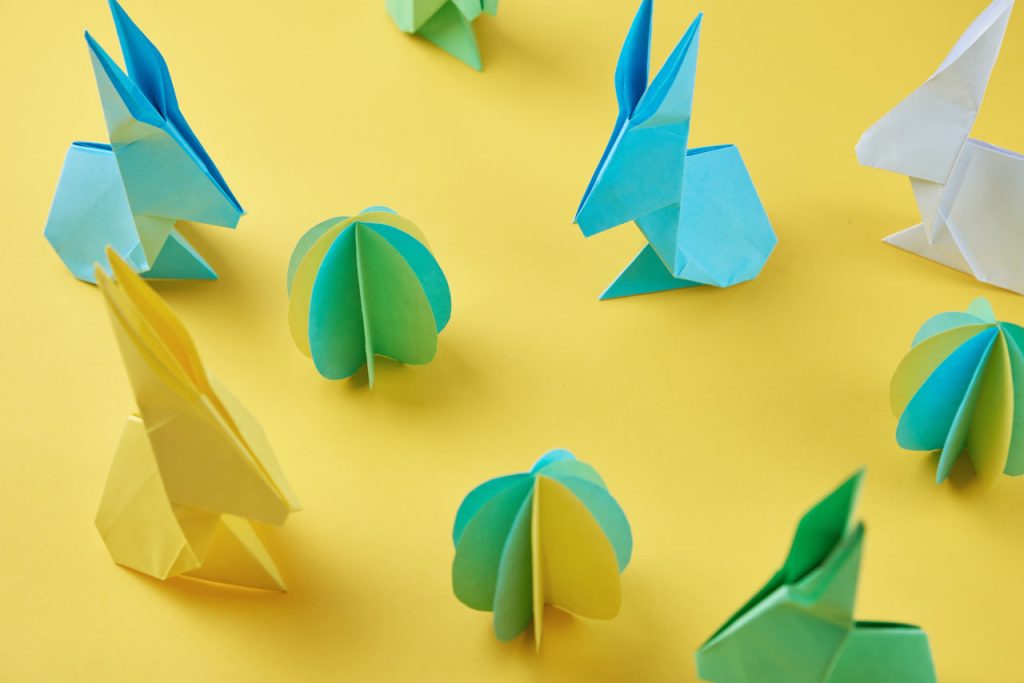Origami, the ancient Japanese art of paper folding, has a rich and fascinating history that spans centuries. What started as a simple craft has evolved into a highly sophisticated and respected art form, inspiring artists, designers, and hobbyists worldwide. In this article, we will delve into the history of origami, tracing its origins, cultural significance, and how it has transformed into the intricate designs we know today.
The Origins of Origami
The roots of origami can be traced back to ancient Japan, but its precise origins remain somewhat unclear. It’s widely believed that paper itself was invented in China during the early centuries AD and made its way to Japan by the 6th century. As paper became more accessible in Japan, it was initially used for religious and ceremonial purposes.
- Religious Significance: The earliest forms of origami were used in Shinto and Buddhist rituals. During these ceremonies, paper cranes, butterflies, and other symbolic shapes were often folded as offerings to deities or as objects of blessing. This sacred practice laid the foundation for origami as an art form.
- The Influence of Chinese Paper-Cutting: In addition to paper folding, Japan also adopted the art of paper-cutting from China, a technique known as kirigami. Though different in method, both arts share the same focus on intricate designs and symbolic meanings.
The Evolution of Origami Techniques
While origami began as a symbolic and religious practice, it gradually evolved into an art form enjoyed by people of all classes. During the Edo period (1603–1868), origami became more widespread and accessible, with instructional books and manuals published to help people learn the craft.
- The Edo Period: During this time, paper folding shifted from being a purely ceremonial activity to a more recreational pastime. People started folding intricate designs as a form of entertainment. Popular models included cranes, frogs, and flowers, which became symbolic of good fortune, longevity, and prosperity.
- The Influence of Western Culture: In the late 19th and early 20th centuries, Western culture began influencing Japanese society. This led to the introduction of new folding techniques and designs, including the modern style of origami we are familiar with today. The term “origami” itself was coined in the 17th century but gained widespread popularity in the 20th century.
Origami in the Modern Era
Origami has come a long way from its humble origins as a religious and recreational craft. Today, it is a highly respected art form and has become integrated into modern design, architecture, and mathematics.
- Contemporary Artists and Innovators: In the 20th century, origami was revolutionized by pioneers such as Akira Yoshizawa, who developed the modern system of notation for origami instructions. Yoshizawa’s contributions allowed for the easy sharing of techniques and made origami more accessible to a global audience.
- Origami in Technology and Science: In recent decades, origami has found applications in technology, particularly in the fields of robotics, engineering, and space exploration. The folding principles of origami are used to design compact, expandable structures such as solar panels and medical devices. Researchers also study origami for its potential in solving complex engineering problems, such as creating materials that can expand or contract in response to environmental changes.
Origami as an Art Form
While origami continues to serve its practical purposes, it has also evolved into an art form that transcends cultural boundaries. Today, artists use origami as a medium to explore creativity, geometry, and storytelling.
- The Role of Geometry: Origami is closely tied to geometry, with many models relying on precise folds and angles to create intricate, three-dimensional shapes. Some artists specialize in geometric origami, creating visually stunning patterns that can range from simple tessellations to complex interlocking structures.
- Origami as a Narrative Art: Modern origami artists often use paper folding to tell stories. For instance, the creation of a paper crane might be seen as an expression of hope and peace, while a flower might represent the fleeting beauty of life. By folding a simple sheet of paper, artists can convey deep emotions and ideas.
The Global Spread of Origami
As origami has evolved, its influence has spread far beyond Japan. Today, origami is practiced all over the world, and people from diverse cultures and backgrounds have made significant contributions to its development.
- Origami Festivals and Communities: Across the globe, origami festivals and communities have sprung up, where artists and enthusiasts gather to share their work and learn from each other. These events provide a platform for origami practitioners to exchange ideas and showcase their talents.
- Origami in Education: Origami is also used in education to teach children and adults valuable lessons in mathematics, engineering, and creativity. Many schools and educational institutions incorporate origami into their curricula, helping students develop problem-solving skills, spatial reasoning, and an appreciation for craftsmanship.
Conclusion
The history of origami is as intricate and detailed as the paper folds themselves. From its origins in ancient Japan as a religious practice to its modern-day applications in technology and art, origami has evolved into an art form with global significance. As it continues to inspire new generations of artists and thinkers, origami reminds us of the beauty and potential that can arise from a simple sheet of paper. Whether you are folding a crane for good luck or designing a complex geometric pattern, the art of origami has the power to connect us to the past while inspiring future creativity.

